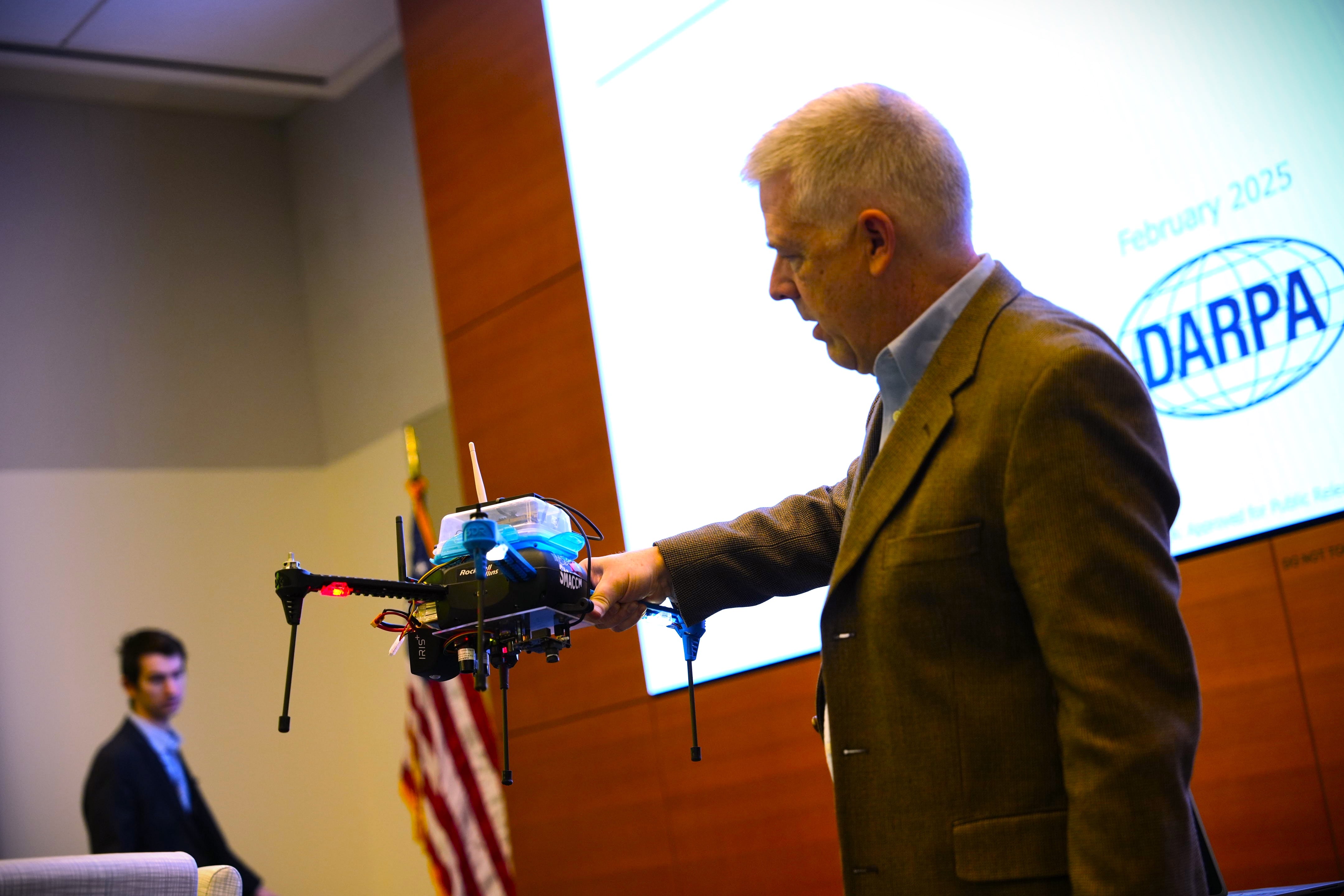Wearable systems and electronic devices unobtrusively embedded into uniforms promise to enhance user productively in many different situations, particularly on the tactical edge. Yet a high degree of electronic fragility — a common trait in the flexible materials used in most wearable systems — has prevented the technology from reaching its full potential.
This situation could soon change. A research team based at Pennsylvania State University reports that it has created a way to produce more durable flexible wearable systems embedding circuits that can heal themselves after breaking. The technology could allow troops operating in the harshest and stressful environments to access communications, information and delivery tasks without the need to carry bulky external devices.
"Wearable and bendable electronics are subject to mechanical deformation over time, which can break or destroy them," said Qing Wang, the Penn State professor of materials science and engineering who led the research team. "'Healing' basically refers to a material, such as ours, that can repair itself after mechanical damage."
Self-healing and flexible
The Penn State researcher's self-healing material is capable of withstanding extreme types of physical deformation — including being cut in half. It can repair itself with little to no outside influence.
"We wanted to find an electronic material that would repair itself to restore all of its functionality and to do so even after multiple breaks," Wang said. "It will be useful across a wide range of applications."
The Penn State technology adds moisture-impermeable boron nitride nanosheets to a base layer of plastic polymer. The material is more rugged than earlier self-healable materials, which often were soft or even "gum-like," according to Wang.
"This material is not going to repair itself forever, but we damaged our material at least 10 times and most of the key properties were maintained," he said.
According to Wang, the new material is able to self-heal due because boron nitride nanosheets can link to each other via hydrogen bonding groups found on their surfaces. When two sheets are placed in close proximity, the naturally occurring electrostatic attraction draws them together. When the hydrogen bond is restored, the two pieces are healed.

Researchers have developed a wearable electronic material that self-heals to restore many functions, even after multiple breaks.
Photo Credit: Penn State University
"We envision that if the material is somehow damaged, then the material can repair its mechanical properties and also other functionality," Wang said. "That's the whole idea: to self-recover multiple properties that are critical for electronic devices."
Earlier research into self-healing technology led to materials that were able to restore a single function after breaking. Yet returning complete functionality to a broken system is essential for creating wearable electronics that are both long lasting and reliable. "For example, if a material keeps its electrical resistivity after self-healing, but not its thermal conductivity, that could place the wearable's electronics at risk of overheating and failing," he said.
Wang noted that the technology could be incorporated into a wide range of clothing designs for use in almost any environment. "Our technology can be used to fabricate clothes or vests for the protection of soldiers working under extreme conditions, such as in the desert and Middle East areas," he said.
The military's plan for wearables
The Department of Defense has investigated the potential of wearable electronics for many years. In August the agency a ramped up its effort in the area by joining with Apple, Boeing, Harvard University, and numerous other corporations and organizations in a new Manufacturing Innovation Institute for Flexible Hybrid Electronics consortium to create stretchable electronics that could be embedded with sensors and worn by troops.
The cooperative agreement will be managed by the Air Force Research Laboratory (AFRL) and will receive $75 million in DoD funding over five years. This amount will be matched with more than $90 million from industry, academia and local governments. In total, the institute will receive $171 million to invest in strengthening U.S. manufacturing.
The DoD is looking forward to a future where troops at the tactical edge will have fast and easy access to an array of communication and information access systems, as well as new capabilities that are inherent to wearable systems. "For defense applications, smart clothing can be used to detect bullet wounds and to monitor vital signs during combat conditions," said Ryan Harbison, an analyst at ABI Research, a technology research firm located in Oyster Bay, New York. "Medics, for example, can use the data generated by smart sensors to find and better treat injured soldiers."
Wang, however, estimates that several years of research lie ahead before a new generation of wearable systems can actually be brought into theater. "It's still not perfect in many perimeters for many applications," he said. He noted that thermal conductivity, for example, could be further improved. "When we use the electronics with high power, smart technology, heat dissipation is critical," he said. "We don't want to get our device to get too hot."








